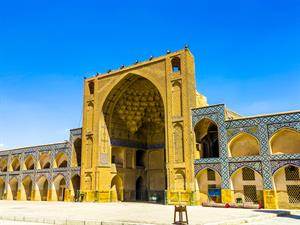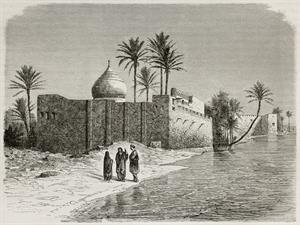
PUMPA - SMART LEARNING
எங்கள் ஆசிரியர்களுடன் 1-ஆன்-1 ஆலோசனை நேரத்தைப் பெறுங்கள். டாப்பர் ஆவதற்கு நாங்கள் பயிற்சி அளிப்போம்
Book Free DemoThe Umayyad Dynasty:
The rift among the followers of the Islam sect and the emergence of Arabs as the dominant force in Arabia and the Middle East further strengthened the Islamic empires.
The Umayyad dynasty was established in \(\text{661 CE}\) by Muawiya, the governor-general of Syria. He later made “Damascus” the capital city of the Umayyad dynasty.
Umayyad: The dynasty of Umayyad was the first dynasty in Islam empire to take the title of “Caliphate”.
The Umayyads reigned their control over vast territories extending from Spain, North Africa to territories of the Indian Subcontinent. The Muawiya period extended for \(20\) years, in which he produced a rule with political stability.
The Internal rivalry and its Consequences:
After the demise of his father Muawiya and his son Yazid, Muawiya I took over the Caliphate and committed heinous crimes against the family of Ali (the blood relative of Prophet Mohammad).
He also tortured the people of Mecca and Medina who refused to accept him as their Caliph. Adding to the miseries was corruption among the ministers, struggle for power, a conspiracy that even brought down the strength of the empire.
During the later periods, worst economic conditions, excess military spending, and adversaries' worries like the Abbasids put an end to the Umayyad dynasty.
The architecture of the Umayyad dynasty:
The architecture of the Umayyad dynasty is called the “Saracenic Architecture” which opened a new page in the world of Western Architecture.

Saracenic Architecture
This architecture included “Pointed arch, towering pillars, domes, semi-domes and Minarets. This style of architecture was later adopted in India, known by the name of “Indo-Saracenic” Architecture.
The Abbasids reign:
Marwan II was the last ruler of the Umayyad dynasty who was killed by Abu Abbas in a battle that happened in \(\text{750 CE}\) and established the Abbasid dynasty. This dynasty was considered one of the most powerful dynasties of the Islamic empire.
The Abbasids displayed a ruthless attitude towards the Umayyad males as they slaughtered them after the defeat of the Umayyad dynasty.

Baghdad during Abbasids
The Abbasids declared “Baghdad” as their capital, also known as the “City of Arabian nights” by the historians.
They fought valiantly against external adversaries like the Byzantines and the neighbouring territories of its capital.
The Scholastic side of Arab Rulers:
The Abbasids were great patrons of arts and literature who built many architectural marvels and patronised writers across their kingdom.
Harun-al-rashid: He was the ruler of the Abbasid dynasty who established the “Grand library of Baghdad or the Bayt al Hikma” during his reign.
Other advancements like interests in Mathematics, Physics and Medicine were also encouraged by the rulers. Exchange of knowledge with India and other countries were also prevalent during the rule of the Abbasid dynasty.